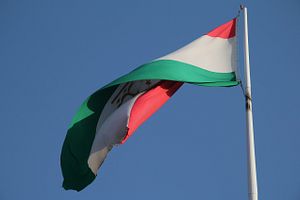Asia-Plus news agency recently reported that annual gold production in Tajikistan had increased from the previous year. A spokesman for the Ministry of Industry and New Technologies (MoINT) was keen to stress the favorable investment conditions, adding that gold production would surely increase to 17 tons by 2022.
This underlines a rather Soviet mentality in which the state propagandizes how much of any given resource has been extracted. Here, gold is a good choice. The very name signifies wealth and success, perhaps indicating to those Tajiks not schooled in economics that the people in charge know what they’re doing. But gold is a commodity like any other – the market price can go up as well as down – like the chief exports of cotton and raw aluminum. If this news is anything to go by, the government has learned little from the recent downturn, and the commodity-dependent economy will continue to be vulnerable to external shocks. To say the least, keeping tabs on gold extraction exposes a lack of imagination when it comes to policymaking.
It is true that it isn’t all bad news for the Tajik economy. The situation in Russia has seen a moderate improvement, suggesting a positive spillover for Tajikistan. In fact, the decline in remittances from abroad (the bulk of which are derived by Tajik migrant workers in Russia) appears to have slowed. Any fears of destabilization resulting from the return of jobless Tajiks would seem to be unfounded.
Masood Ahmed, the Director of the Middle East and Central Asia Department at the International Monetary Fund (IMF), was also cautiously optimistic about Tajikistan’s prospects in remarks at a press conference earlier this month. He remained hopeful that an IMF-supported program would soon be agreed – with vulnerabilities in the financial sector a top priority. Still, there remains a serious lack of diversification. This is where the Asian Development Bank (ADB) comes in. They have just announced a 5-year partnership strategy with the Tajik government “to promote more sustained and inclusive growth that is less susceptible to external shocks.”
The ADB proposes to support investment climate reforms on top of vocational education and training. Unfortunately, there is reason to dampen expectations of any far-reaching economic development. Past assistance from the IMF and ADB has had the worrying tendency of lining the pockets of the political elite. Most notoriously, World Bank loans designed to top up the government budget have disappeared down a financial black hole. Rampant corruption and nepotism mean there is a danger that reforms will exist on paper only, or be superficially implemented at best.
Part of the ADB’s plan for Tajikistan involves improving the national road network. Tajikistan’s mountainous geography ensures that road quality is often poor, hindering internal trade. So at first glance, this is a welcome move and it is tempting to suggest it will stimulate growth and better connect the country to regional markets. But this is probably too optimistic. Most major interests are in the control of the presidential family, from state aluminum company Talco to banks, sports clubs, and the few boutique shops. These holdings are jealously guarded and any local entrepreneur who finds himself in direct competition will not last long. A genuine market economy remains a distant dream. If more roads are widened and resurfaced in such a hostile economic environment, how many private enterprises will actually benefit?
Agriculture remains the biggest employer in Tajikistan by some margin. An American agency, Feed the Future, estimated that 75 percent of Tajik workers were employed in this sector as recently as 2012. The ADB wants to make agriculture more technically proficient and bring techniques into the 21st century. Unfortunately, advances in technology could be a double-edged sword. An influx of new machinery would make agricultural output more productive but also lessen the need for human workers. This may spark a nascent urbanization, though without a corresponding boom in other sectors it is hard to see where the surplus workers will find jobs.
It is unlikely to be a gold mine. In the Asia-Plus story, the ministry official went on to boast about the number of foreign gold-mining operations. Several of these are Chinese-led projects. Indeed, China is the dominant actor in both the mining and construction sectors. However, they prefer to hire their own, and pass up the less skilled Tajik workers – a situation that is going to foster resentment. Unlike Turkmenistan and Uzbekistan, Tajikistan does not impose any local quota, thus encapsulating a political relationship that can be described as increasingly neo-colonial.
Foreign investments in this area will boost government coffers – notwithstanding the proportion siphoned off by elites – but it is doubtful whether they will really help the native population. This dependency on China can only delay the effective transfer of knowledge, and prolong Tajikistan’s desperate need for international assistance.
Henry James holds a degree in risk from Durham University. His master’s thesis focused on the risk of state failure in Tajikistan.

































